Facing Problems: Confront, Accept, Resolve, Release
During my childhood, the monastery would typically hold two three-month meditation retreats each year, one in the summer and the other in the winter. The winter season, being too cold for travel or solitary meditation in the deep mountains, was considered an ideal time for group meditation, allowing everyone to gather at the monastery for practice. Similarly, the summer, being excessively hot for work, also provided a suitable time for meditation. However, this does not imply that summer and winter are the ideal seasons for meditation. Rather, we can learn from this that one should not be troubled by extreme cold or heat.
In front of the meditation hall entrance of every Chinese monastery, there is an inscription that reads: “Surrender the physical body to its constant abode, and entrust life to the heavens and earth.” This conveys the message: one must fully devote themselves to meditation, letting go of concerns about one’s body or life. Those participating in meditation were informed in advance that no one would take care of them during the retreat. If someone were to pass away during the retreat, they would be placed under the beds until the end of the retreat, at which point they would be cremated. This may sound harsh, but it serves to help us relinquish all expectations and attachments. Only through this can we truly practice.
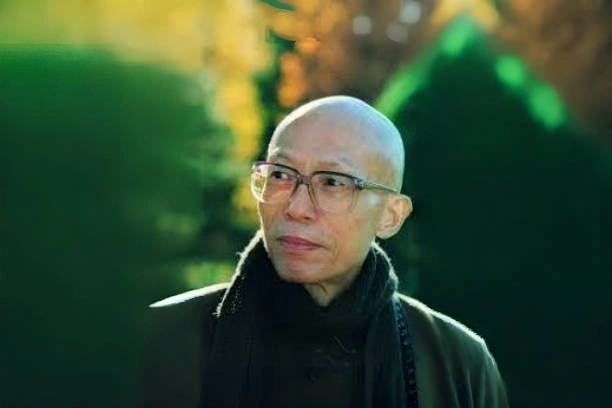
During meditation, everyone eats, sleeps, and meditates in the meditation hall. Those new to the practice might wonder if there would be guidance or if they would be informed of the expected spiritual attainments and daily schedules, let alone the fundamental training for practice. In fact, no explanations are given; one simply follows the example of others. If one were to inquire about how to practice, they might even be struck with a flat wooden stick called a “incense board,” approximately a foot long, used in the meditation hall to tap the shoulders of meditators, rouse them from concentration, or relax their muscles.
Once, I asked a master, “How long do we have to meditate?”
He replied, “Until the year of the donkey.” Unfortunately, there is no such year in the Chinese calendar. His point was that there is no end. We should not seek explanations. This left me somewhat disheartened, as it seemed like blind practice. However, at that time, monasteries followed this method. Monastics practiced in this “blind” manner for several years, and gradually, their personalities and dispositions improved or elevated.
During meditation, there are brief periods for Dharma talks to discuss practice. However, it is not common to engage in conversations with the meditation masters. If something unusual occurs—such as a seemingly significant experience, an enlightenment experience, or encountering an unsolvable problem—one can approach the person in charge of the meditation hall. They will question and test you. If they deem your experience significant, they will report it to the meditation master. The master may then have the person in charge of the meditation hall help you, or choose to meet with you alone. This individual meeting with the master is called a “private interview.”
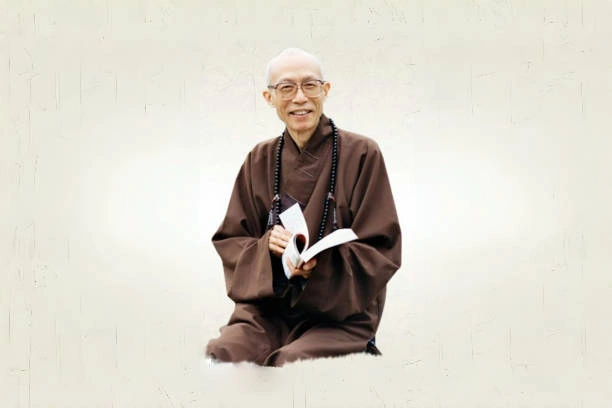
It is possible that one could practice in a monastery for several years without ever having an individual meeting with the master. This is not necessarily a bad thing. In fact, it may indicate that your practice is progressing smoothly, and you have been following the instructions given during Dharma talks very well, so there is no need for the master to address your issues or doubts individually.
Today, most people do not spend years in continuous practice. They often visit monasteries or specialized meditation centers that offer short-term retreats, similar to what we offer at the Eastern Zen Temple in New York City. Since there are fewer practitioners, everyone has the opportunity to meet individually with the meditation master. During our retreats at the center, participants have the opportunity for four private interviews: two with my assistant and two with me. If there are special circumstances or sudden experiences, they can request additional private interviews.
During these private interviews, practitioners discuss their current mental and physical states, as well as any difficulties or questions regarding their practice. The purpose of these interviews is to seek help in resolving issues that arise during meditation.
When I was young, being granted entry into the master’s room for a private interview was considered a significant achievement. It meant that the monastic had experienced initial awakening or was very close to enlightenment. Most people never had the opportunity to enter the master’s room. During my practice in mainland China, I never had that opportunity either.
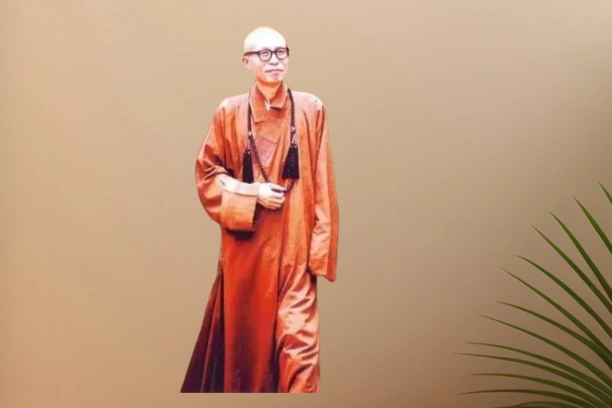
During meditation retreats, practitioners engage in basic labor such as food preparation and cleaning. These tasks are considered part of the practice, providing an opportunity to practice mindfulness in daily life and adjust one’s mind. Typically, when we work, our minds are scattered, thoughts are rampant, and if the mind is not resting, it is not practicing, leading to tension and anxiety. Regardless of the task at hand, paying attention to the work and bodily movements helps us practice while working. We aim to keep our minds gentle and relaxed, preventing them from wandering. If one can learn to do this during meditation, then every day in daily life becomes a practice, which is quite delightful.
In general, it is challenging to maintain a meditative state in every action, so we use meditation to cultivate this. Every day, we set aside time to meditate and concentrate. During meditation retreats, we spend a great deal of time meditating. Through meditation, we can observe how chaotic our thoughts are. By cultivating concentration and maintaining calmness through meditation, we can influence our daily lives. This is one of the purposes of meditation practice.
Now, back to my meditation story: In 1949, during the transition of political power in China, I was in Shanghai, only nineteen years old and still a novice monk. As the Communist Party approached Shanghai, the impoverished novices had only two options: to join the Communist Party’s army or the Nationalist Party’s army. Eventually, I and other novices joined the Nationalist Party’s army and retreated to Taiwan. At that time, once you joined the Nationalist Party’s army, your service was for life. It was not until ten years later that I could re-ordain. The main reason I was granted permission to retire from the military was due to my poor health. However, during my time in the military, I constantly questioned myself. These questions had been with me since I was a novice: “Is all of this also a form of practice? Have I learned anything more? Will I meet an enlightened meditation master and find answers?”

In Taiwan, whenever there was an opportunity, I would practice and seek the advice and guidance of the masters. I once asked a great master, “How should I practice? What should I do?”
The master replied, “Practice? What are you talking about? What does ‘practice’ even mean? Isn’t it enough to do your daily tasks well? That’s it.” At that time, I felt as though I would be trapped in the military for the rest of my life, unable to make any progress in my practice. Even hearing the stories of the great Zen ancestors did not inspire me. For example, the Sixth Patriarch of Zen, Huineng, was originally just a woodcutter. One day, he heard a line from the Diamond Sutra and immediately understood it, even though he had never studied Buddhism or practiced meditation, and he immediately became enlightened! I had also heard stories of people who simply saw or spoke with the Buddha and became enlightened. Sometimes the Buddha would say just one sentence to someone like, “Ah, you’ve finally arrived!” and then that person would suddenly become enlightened.
I felt burdened by my heavy karma. Whenever I saw a Buddha image or encountered a realized master, I would feel a sense of loss. I had many questions and doubts, wondering, “I’m not dull, so why can’t anyone help me understand how to practice?” I asked many people, but no one was of much help or provided me with encouragement. They always told me, “Your spiritual potential must be poor, and you must have heavy karma. You must practice diligently, repent, make offerings to the Buddha, and recite sutras.” Until the age of twenty-eight, I was troubled by questions about practice. Fortunately, at that time, I met Venerable Lingyuan, who was a disciple and dharma heir of the modern Chan master Xuyun. During my time in the military, I had been constantly asking myself questions, which arose from a strong, irrational state due to my practice. Once, due to my poor physical condition, the military granted me a day off to rest, and I used that time to visit temples in Taiwan.
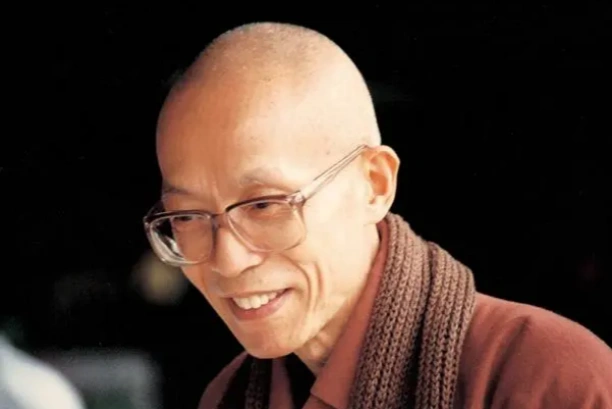
On the rural roads, I was even more focused on practice, and my doubts deepened. I could not see the beauty of the scenery; my mind was filled with “why”—why should I meditate? Why should I not do this? Should I get married? Why not? These questions were ordinary, but I had hundreds of similar questions, all revolving around a big “why.” The specific questions themselves were not important; it was the accumulation of these questions that created a state of doubt.
Afterward, I arrived at a temple. Although I was in military uniform, the monastics still treated me as one of their own. They let me spend the night on a bunk bed with another visitor—Venerable Lingyuan. Initially, I did not know that he was a great master; I only saw a serene and tranquil old man. In the evening, Venerable Lingyuan began to meditate, and I joined him. After a while, I cautiously asked him, “May I ask you some questions?” Venerable Lingyuan said, “Go ahead!” I started asking him many questions, and after each question, he would say, “Is that all?” After nearly two hours of continuous questioning, I became very confused and a little disheartened, thinking, “He has been asking me if I have more questions, but he hasn’t answered a single one. What is going on?” Nevertheless, I continued to ask. Finally, Venerable Lingyuan asked once again, “Do you have any more questions?” I was very puzzled and hesitated. At that moment, Venerable Lingyuan forcefully knocked on the bed, making a loud noise that startled me. He said, “Pick up all your questions and then put them down! Who is it that has these questions?”
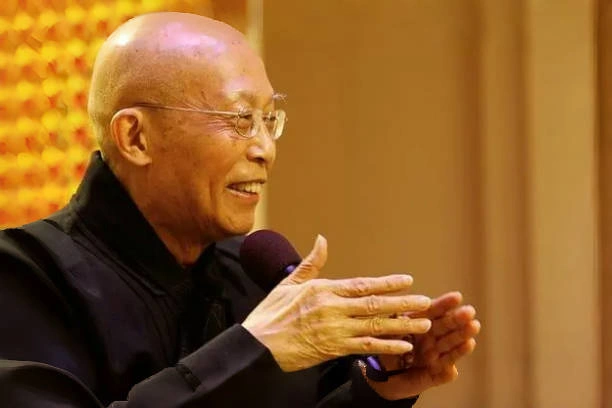
At that moment, all my questions disappeared, and the entire world changed. I was sweating profusely, but I felt exceptionally light. My world had completely changed, and those previous questions suddenly seemed ridiculous. The person I used to be became a laughable figure, and I felt as though I had shed a thousand-pound burden. The next day, Venerable Lingyuan asked me, “Did you sleep well?” I replied, “Very well!”
That was the most significant experience of my life. Before that, I had been struggling to interpret Buddhist scriptures and the words of meditation masters. After that, without needing any explanations, I could immediately understand what they were talking about. It was as if they were speaking my own words. Before, I would wonder, “What does this word really mean? Is there a key point behind this passage or this expression?” Now I understood that a word is just a word, nothing more. If you can understand the meaning behind the words, that’s great; if you can’t, that’s also fine. People who listen to my teachings and ask me questions about practice and life, some understand what I say, and some do not. Either way, it’s fine.
However, this experience did not make all my suffering, troubles, and anxieties disappear. I could still sense them. Externally, these problems were not as apparent, but I knew that they could still affect me in certain situations.
Suffering can be a “concept,” arising from mistaken views, or it can be a “phenomenon,” arising from greed, anger, and ignorance. Suffering caused by mistaken views can be eliminated with “right view.” Suffering caused by greed, anger, and ignorance is more fundamental because greed, anger, and ignorance have existed since time immemorial. To eliminate them, one must practice. Practices such as Zen meditation and mindfulness, such as sitting in meditation, walking meditation, reciting the Buddha’s name, making offerings to the Buddha, reading sutras, and observing the mind, can fundamentally uproot suffering.
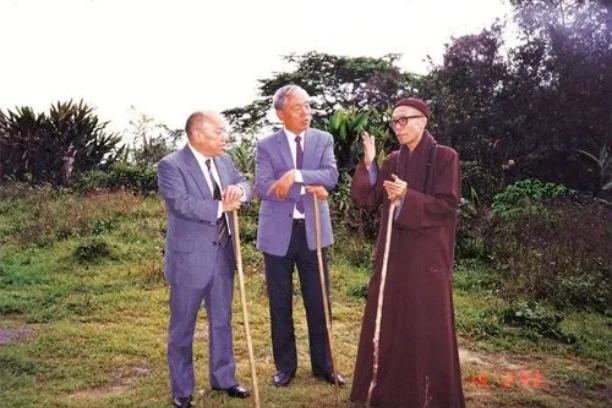
After meeting Venerable Lingyuan, my questions and troubles disappeared. Although my world had changed significantly, the roots of my suffering remained, and only through practice could they be eradicated. Even if you have seen your true nature, when suffering arises, it still causes pain. However, you will clearly perceive the arising of suffering and understand it for what it is.
I must clarify that one should not assume that a slight awakening can eliminate all suffering. It is not that simple. If a meditation master claims that all their problems and suffering have disappeared, do not believe them! I am still an ordinary person and still need to practice regularly. In fact, I have never seen any evidence to suggest that any patriarch or meditation master has claimed that they no longer have suffering or that they have become enlightened. However, after the initial experience of awakening, your confidence becomes very firm, and once you catch a glimpse of your true nature, your faith has a strong foundation.
After my experience with Venerable Lingyuan, I felt a strong need to continue practicing. With the help of several masters and General Zheng Jiemin, I managed to retire from the military and re-ordain. I became a disciple of Venerable Dongchu, a highly respected figure who was also a dharma heir of both the Linji and Caodong Zen lineages and the founder of the “Life” magazine. Venerable Dongchu’s attitude toward me was “harsh.” He would tell me to make offerings to the Buddha, but a few days later, he would say, “This is just dogs eating excrement, go read the Buddhist scriptures!” After I read the scriptures for several months, he would say, “The patriarchs believe that the Buddhist scriptures are only beneficial for festering sores, go write an article!” After I wrote the article, Venerable Dongchu would tear it up, saying, “These are stolen ideas. Write something useful using your own wisdom!” He even asked me to seal off a room and open a new door on another wall.
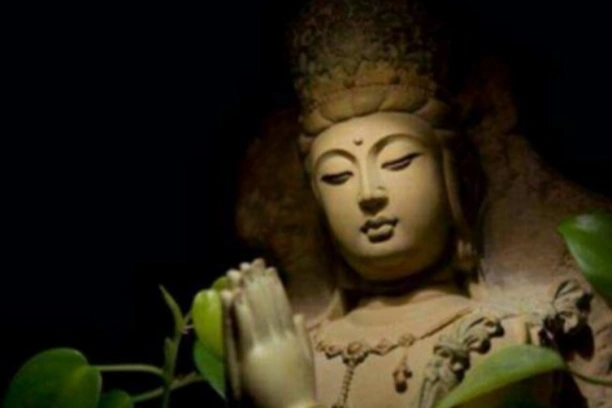
At that time, I still sensed traces of suffering within me, and I knew that they could manifest in certain situations, so I performed thirty days of repentance. Afterward, I wanted to practice in seclusion for three years at a small monastery in southern Taiwan, but there was no room available for me to use, and I did not have the funds to build a small house. When a lay devotee learned of my situation, they donated money to build a small hut for my seclusion, and in 1961, I began a six-year period of seclusion.
Before entering seclusion, there was a small ceremony with only a few participants, during which I was symbolically “sealed” inside the hut. From the moment I began seclusion, my mind was very peaceful and I felt extremely joyful, as if I had found my true home. I ate only one meal a day, consuming sweet potato leaves that I grew myself. The hut had a small courtyard, and from the front, I could see a cliff. Although I was in the countryside, I did not feel confined, as there was no running water or electricity in the hut. I had to fetch water from a spring and bathe there. After about a year, someone provided me with an oil lamp, but I had no money to buy oil for it.
Initially, I did not focus entirely on sitting meditation but spent time on repentance and making offerings to the Buddha. I used a ritual called the “Great Compassion Repentance,” based on the Great Compassion Mantra. I also recited the “Lotus Sutra,” bowing once for each character, with each sutra consisting of approximately eighty thousand characters. It may sound like a lot of bows, and indeed it was. However, I heard that in Tibetan Buddhism, practitioners have a similar practice, but they must bow ten thousand times, so according to Tibetan standards, I still had a long way to go!
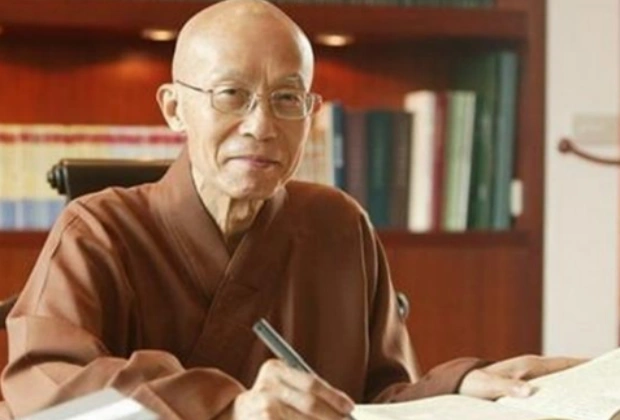
After practicing in this manner for about half a year, I began to focus on sitting meditation and also continued to read Buddhist scriptures. During the seclusion period, I also wrote several articles, including two books: “Orthodox Buddhism” and “Essentials of Vinaya Studies.” Originally, I had planned to seclude myself for three years, but those three years passed by in an instant, so I decided to extend it for another three years. However, my eyes developed problems, and I had to interrupt my practice to seek treatment. After six months, I returned to continue the remaining three years of seclusion.
After emerging from seclusion in March 1968, I felt it was time to begin spreading the Dharma. I wanted to teach people the content of Buddhist scriptures, the teachings of the Buddha, and methods of practice. At that time, the level of practice in Taiwan was not very high, and the education level of monks and nuns was also not very high. A Christian missionary even criticized me, condemning the monastics of Buddhism as being unable to read or understand the scriptures. I realized that the Buddhist community needed practitioners with a high level of education, and I decided to go to Japan to study at Rissho University. Japan has a deep tradition in the study of Buddhist knowledge, and I thought I could bring back what I had learned to Taiwan and work to improve the quality of Buddhist education there.
In Japan, I divided my time between studies and practice. When the school was on break, I continued my practice. In many major temples in Japan, I practiced and studied under masters of the Rinzai, Soto, and Jodo sects, especially under the guidance of Master Bantie Niu, a disciple of Master Yuantong. Master Yuantong had a temple in northeastern Japan. I spent several winters with him, practicing and studying. He gave me a “certification,” a formal recognition that the student had completed training in both the Rinzai and Soto sects. When I left him, he suggested that I go to the United States to promote Zen Buddhism.
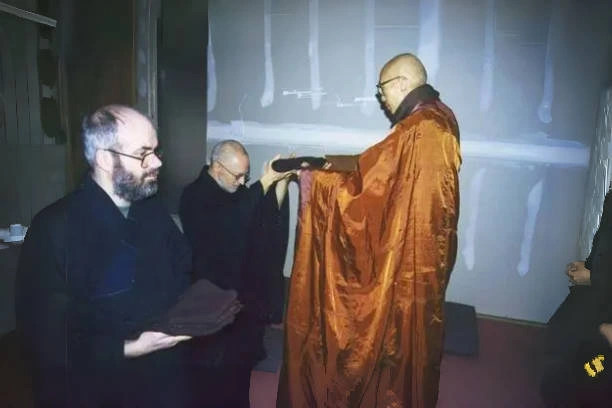
Six years later, I completed my doctoral dissertation, which was quite fast. In 1975, I returned to Taiwan, and after spending some time there, I was invited by the American Buddhist Association to come to the United States to serve as the abbot of the Chuang Yen Monastery in Brown County, New York. I did not know how to help the local people because I did not have much knowledge about Americans, and my English was very poor, but I went to the United States and lived in the monastery. Soon, people started coming to the monastery to seek guidance on their practice.
After spending some time in the United States, I returned to Taiwan for a visit and paid respects to my two masters. Since I had not become their dharma heir, having left them to go into seclusion and then to Japan, I received the transmission of the two Zen lineages from them at the same time.
I told these two masters, “I am now teaching Zen in the United States. Do you think it is okay?”
Their response was, “Ha! Do you think you can teach Zen?”
I replied, “I’m just deceiving people, don’t worry!”
They said, “Oh, in that case, that’s fine.”
Afterward, I began teaching Zen in Taiwan, also deceiving people in the same way!
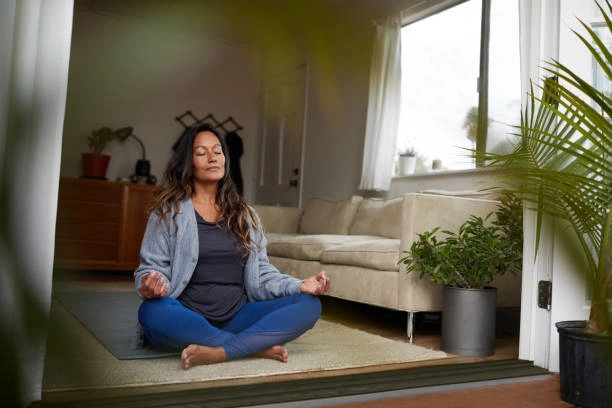
When I began teaching Zen, I reflected on the arduous process through which I had learned how to practice, a journey that took a considerable amount of time. No one had ever discussed with me the methods of practice or the progression of practice. Therefore, I decided that when I started teaching Zen, I would elucidate these aspects clearly. Although Zen does not rely on written words, nor does it possess specific techniques or stages, the Buddhist scriptures do indeed discuss methods of meditation and the progression of practice.
Through diligent and gradual practice, one can achieve results. This was the method of practice that I experienced in my youth. Even though I had never discussed it with anyone, this approach to practice was based on the concept that as long as one diligently applies oneself, progress will naturally follow. However, convincing modern individuals to believe in this seemingly “blind” and method-less practice—progress that is gradual and unhurried—might not pique their interest. Contemporary people often feel they are too busy and lack the time for such practice, and they may not understand the value of this type of practice. In today’s world, it is important to teach them the methods of practice and the progression of practice, so they can establish a foundation for effort and then derive benefit from their practice.







